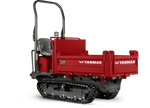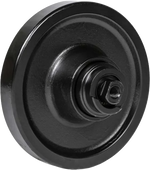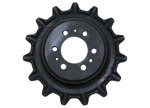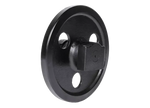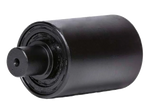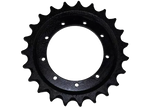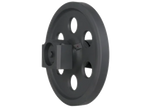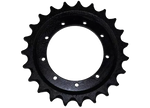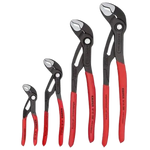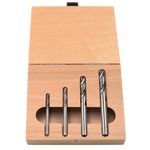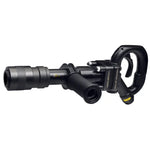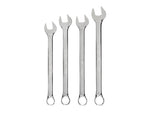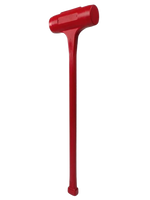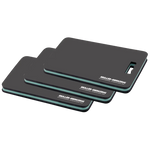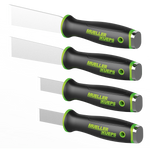Featured Products
5 Factors to Help you Decide Between Steel and Rubber Tracks
Written by Luis Montes Updated On Aug 15, 2024

We’ll compare the following factors of steel and rubber tracks to help you decide which one to use on your mini excavator or compact track loader:
- Purchase price.
- Weight difference.
- Performance and suitable applications.
- Durability.
- Equipment compatibility.
Although there has been much discussion on rubber vs steel tracks, let’s approach it differently by sharing and comparing facts, real data, and testimonials to make a solid decision.
Purchase Price of Steel and Rubber Tracks
Steel tracks are more expensive than rubber tracks.
The tables below compare the purchase prices for three mini ex and three compact track loader tracks (the information is from several rubber and steel track manufacturer websites):
Weight Difference of Steel Tracks vs Rubber Tracks
Steel tracks are also heavier than rubber tracks.
Let’s compare their weight differences to understand the impact on the equipment’s performance and trailering requirements.
The following tables have data from mini excavator owner manuals, spec sheets, and heavy equipment track manufacturer websites.
| Equipment | Track Size | Track Weight | Weight Difference per Track |
||
|---|---|---|---|---|---|
| Steel | Rubber | Steel | Rubber | ||
| John Deere 50G | 400x72.5Nx74 | 400x72.5x74 | 593.7 lb | 533 lb | 60.7 lb |
| Bobcat E35 | 350x52.5x86 | 300x52.5x84 | 414.8 lb | 318 lb | 96.8 lb |
| Kubota KX080-4 | 450x81.5x76 | 450x81.5x76 | 897 lb | 836 lb | 61 lb |
| Equipment | Track Width - (in / mm) | Operating Weight | Weight Difference |
||
|---|---|---|---|---|---|
| Steel | Rubber | Steel | Rubber | ||
| John Deere 60G | 16 / 400 | 16 / 400 | 13,850 lb | 13,620 lb | 230 lb |
| Kubota KX040 | 14 / 355 | 16 / 400 | 10,010 lb | 9,855 lb | 155 lb |
| Yanmar ViO50 | 16 / 400 | 16 / 400 | 11,078 lb | 10,792 lb | 286 lb |
| Komatsu PC45-1 | 16 / 400 | 16 / 400 | 9,823 lb | 9,669 lb | 154 lb |
As you can see, the weight difference ranges from less than 100 lb to several hundred, depending on the equipment. The weight difference will improve the machine’s lifting capacity and stability (as discussed later). Still, it won’t necessarily push you to the next weight class of trailer and consequently to get a CDL (commercial driver’s license).
Steel tracks for skid steer are a different story. Even though the following information (about their weight difference due to steel and rubber tracks) is from manufacturer spec sheets, take it with a grain of salt because the difference is too high.
| Compact Track Loader | Track Width - (in / mm) | Operating Weight | Weight Difference |
||
|---|---|---|---|---|---|
| Steel | Rubber | Steel | Rubber | ||
| Cat 299D2 | 16 / 400 | 16 / 400 | 12,055 lb | 11,275 lb | 780 lb |
| Cat 299D3 XE | 14 / 355 | 16 / 400 | 12,605 lb | 11,756 lb | 849 lb |
| Case TV620B | 18 / 457 | 17.7 / 450 | 17,345 lb | 16,000 lb | 1,345 lb |
Although some compact track loaders require undercarriage changes, such as different track rollers and idlers or the addition of a carrier roller, the weight difference seems to be much only from changing rubber tracks to steel.
Here’s a brief calculation to support our claim. We compared the length and weight of steel and rubber tracks for three machines:
| Equipment | Track Size | Track Length (in. - mm) |
Operating Weight (lb) | Weight Difference |
||
|---|---|---|---|---|---|---|
| Steel | Rubber | Steel | Rubber | |||
| John Deere 60G | 400x72.5x74 | 208 - 5,293 | 13,850 | 13,620 | 230 lb | |
| Komatsu PC45-1 | 400x72.5x72 | 203 - 5,148 | 9,823 | 9,669 | 154 lb | |
Now, a 400x86x60 rubber track for the Cat 299D3 XE is 200 inches long (5,074 mm), less than the excavators above. So, you would expect an operating weight difference around the above values, not 849 lb, as you can calculate using the Cat specs sheets.
The bottom line is that the weight difference is considerable at first glance. We recommend checking it directly with steel track manufacturers and not basing your purchase decision only on the equipment spec sheets.
Performance and Suitable Applications
Most people claim metal tracks can develop more traction than rubber tracks just because they are heavier. Although the track’s weight does impact the machine’s performance, there’s more than that.

Steel tracks develop more traction in certain applications (such as loose ground) than rubber tracks due to their stiffness and overlapping shoes, making weight transfer more consistent across their length.
On the other hand, rubber track flexibility causes it to apply more pressure underneath the rollers and less between the gaps. So, compared to steel tracks, there will be fewer load and grip points.
The Agricultural Field Engineering case study “Compare & Contrast—Making the Case for Tires vs. Tracks” proves that rubber track machines don’t distribute their loads equally across the track but concentrate on rollers and idlers.
Steel tracks’ stiffness and extra weight also improve excavators’ stability and lifting capacity.
In one of his replies to comments from his rubber to steel tracks YouTube video, the owner of Abrams Excavating LLC claims steel tracks make his excavator more stable while using tilt rotators.
Some compact excavator owner manuals, like the Hitachi Zaxis series on page 5-16, also mention the link between track stiffness and stability.
As mentioned, mini excavator steel tracks also impact lifting capacity. The following table (with data from spec sheets and owner’s manuals) shows how material benefits lifting capacity:
| Excavator with cab, standard arm, and counterweight | ||||||
|---|---|---|---|---|---|---|
| Model | Lift Point Height | Lift Point Radius | Rubber Track | Steel Track | ||
| Over Front | Over Side | Over Front | Over Side | |||
| John Deere 60G | 4 ft. 11 in. | 9 ft. 10 in. | 8,550 lb | 3,310 lb | 8,550 lb | 3,350 lb |
| John Deere 35G | 5 ft. | 10 ft. | 2,662 lb | 1,628 lb | 2,662 lb | 1,700 lb |
| Kubota UL55-4 | 4 ft. 11 in. | 9 ft. 11 in. | 2,820 lb | N/A | 2,920 lb | N/A |
In addition to traction and stability, some heavy equipment owners prefer steel over rubber tracks for harsh applications like forestry, working on rocky terrain, or demolition sites with rebar and sharp debris.
Despite the above, people like Mike1955, a member of the TractorbyNet Forum, consider rubber tracks to be good all-rounders and haven’t even tried steel tracks. After all, high-quality rubber tracks are designed and manufactured to withstand harsh conditions.
Besides, unlike steel tracks, which can chew up concrete and damage blacktop driveways and other delicate surfaces, rubber tracks’ different cleat designs let you use them efficiently on any terrain. Our article “Engineering and Application – A Deep Dive into Rubber Track Patterns” discusses the role of different rubber track tread patterns in depth.

The last performance aspect to consider when choosing between steel and rubber tracks is operator comfort. Metal tracks are noisy and produce a rougher ride, as Tyler d4c, catman13, and labradorguy, members of the Heavy Equipment Forum, claim.
Durability of Steel vs Rubber Tracks

In equivalent applications and conditions, you can go through 2 rubber tracks to 1 steel set.
Both steel and rubber track cleats wear down, but you can replace individual damaged track shoes on steel tracks, extending their lifespan.
In contrast, once you gouge a rubber track to the point of getting into the internal components, you’ll have to replace it. Our article “Can You Repair a Rubber Track?” explains why you shouldn’t waste time repairing a gouged rubber track. Instead, consider getting premium aftermarket rubber tracks like the ones available at Fortis HD.
However, rubber tracks have an advantage in coastal regions, where high moisture levels and soil abrasiveness considerably shorten the life of metal tracks. The American Journal of Engineering and Applied Sciences proved this in its case study on the “wear of steel track undercarriage based on geographic location.”
Equipment Compatibility

Photo sources: www.ritchielist.com, www.hearmor.com
In the case of machines such as the Takeuchi TB285 and the Kubota KX080-4, changing between rubber and steel tracks will be straightforward. Just swap the tracks without needing to change other undercarriage components.
Some compact excavators, like the Bobcat 442, will need you to upgrade their single-flange rollers to dual-flange, while others, like the John Deere 35G, will need a different track adjuster, as the owner’s manual indicates in section 4-1-17.
In contrast, compact track loaders like the Cat 299D3 XE or Bobcat T300 will need different bottom rollers, idlers, and the addition of a carrier roller (as you can see in the above image).
In a Nutshell
Steel tracks are more expensive and (in most cases) more durable than rubber tracks. Their heavier weight and stiffness make machines more stable and generate more traction.
On the other hand, rubber tracks, especially premium aftermarket from reliable manufacturers like Fortis, are a cost-effective investment.
The different tread pattern designs add versatility. There are tracks for rocky ground, mud and snow, and even delicate surfaces like turf or blacktop driveways. Plus, they contribute to the operator’s comfort by absorbing vibrations and minimizing noise levels in the cab.





